11 巻, 4 号
選択された号の論文の9件中1~9を表示しています
- |<
- <
- 1
- >
- >|
-
1997 年 11 巻 4 号 p. 313-320
発行日: 1997年
公開日: 2006/02/01
PDF形式でダウンロード (466K) -
1997 年 11 巻 4 号 p. 321-326
発行日: 1997年
公開日: 2006/02/01
PDF形式でダウンロード (860K) -
1997 年 11 巻 4 号 p. 327-333
発行日: 1997年
公開日: 2006/02/01
PDF形式でダウンロード (2272K) -
1997 年 11 巻 4 号 p. 334-338
発行日: 1997年
公開日: 2006/02/01
PDF形式でダウンロード (869K) -
1997 年 11 巻 4 号 p. 339-345
発行日: 1997年
公開日: 2006/02/01
PDF形式でダウンロード (3055K) -
1997 年 11 巻 4 号 p. 346-350
発行日: 1997年
公開日: 2006/02/01
PDF形式でダウンロード (785K) -
1997 年 11 巻 4 号 p. 351-354
発行日: 1997年
公開日: 2006/02/01
PDF形式でダウンロード (1220K) -
1997 年 11 巻 4 号 p. 355-364
発行日: 1997年
公開日: 2006/02/01
PDF形式でダウンロード (1474K) -
1997 年 11 巻 4 号 p. 365-370
発行日: 1997年
公開日: 2006/02/01
PDF形式でダウンロード (780K)
- |<
- <
- 1
- >
- >|
